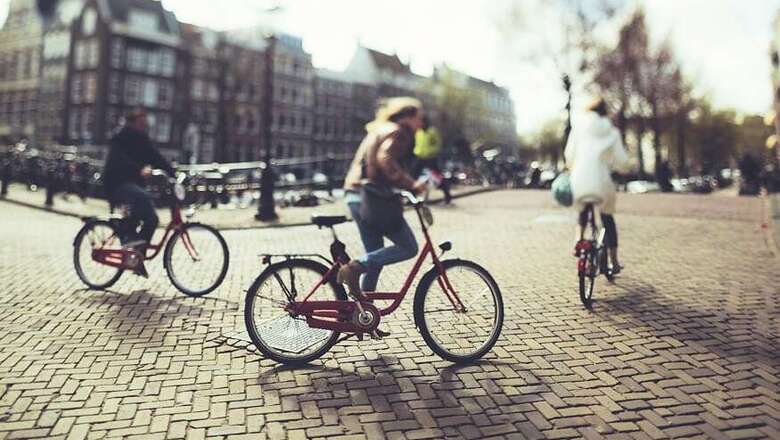
views
The stretch from the Gwanghwamun Square to the City Hall in Seoul's otherwise busy Sejong-daero area wore a festive look as a 'car-free day' was observed on September 16 by local authorities to encourage citizens to use more public transport facilities than private vehicles. Private cars were not allowed to ply in the designated 'Car-Free Street' zone and people took public transport like buses and metro to reach the venue.
The event began at 7 am local time and the restriction is in place till 8 pm, according to the Seoul Metropolitan Government. For observing the 'car-free day', the local administration had marked a 1.1 km-long 'Car-Free Street' Sejong-daero (from Gwanghwamun to Seoul Plaza) and people sang and danced and made merry and a parade was also held on the occasion.
Differing from last year, this year a no-power parade took place through City Hall Sejong-daero, Jongro 1-ga, Sungnyemun Gate City Hall from 11:10 am until around 12:10 pm during which there was traffic control, according to information shared by the Seoul Metropolitan Government.
This year's Seoul Car-Free Day' event had been pushed a week ahead from the original September 22 scheduled date, in consideration of the Chuseok holidays. Chuseok is a Korean thanksgiving festival during which families get together to celebrate.
The campaign seeks reduction in driving of private cars and active use of public transportation systems, including subways (metro) and buses in order to reduce air pollution from cars and cut down on greenhouse gases. "I was in a sedan, travelling with somebody on way to the airport, and I saw that the street was blocked off at Gwanghwamun Square for private cars," said a local resident.
Sejong-daero, the boulevard named after the legendary Korean ruler King Sejong is situated in the heart of Seoul and the space between its two carriageways, stretching from Gwanghwamun to Seoul Plaza (in front of City Hall) is an iconic public square frequented by domestic and foreign tourists for recreation, and used generally by local people for hosting various events on multifarious themes on normal days.
An iconic giant statue of King Sejong is situated in the public square in the backdrop of ancient Gyeongbokung Palace facing the square. A towering statue of Admiral Yi Sun-sin of Joseon Dynasty, near the Gwanghwamun metro station, is also located on the square. The Seoul Metropolitan Government had also planned to hold environmentally-friendly events along with the main car-free day' event, seeking to minimise the use of single-use items and plastic, it said.
"There will also be various events and programmes that the whole family can enjoy from children to elderly, including a citizen walk, anniversary ceremony, putting the environmentally-friendliness label, drawing pictures on reused large banners, no-power parade, environment and culture festival, stage performances, and 40 experiential booths, the local government had earlier said.
The environment and culture festival at the end of the car-free event began from 4:30 pm local time, starting with a street performance from the pungmul band, along with a bubble show, fashion show with recycled, reused banners, and an environment madanggeuk (theatrical play) ceremony on the stage, it said.


















Comments
0 comment